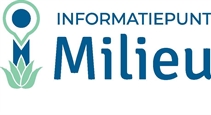Cooling systems (airconditioning)
The Ministrial regulation establishments and activities Decree BES (RIA BES) lays down rules for refrigeration installations. The rules are about preventing leakage of the refrigerant through maintenance and inspection.
On this page
- What is a cooling installation
- Prohibitions and rules
- Types of refrigerant
- Rules for maintenance of refrigeration systems
- Dealing with leaks
What is a cooling installation
A cooling installation is a combination of parts filled with refrigerant and all the equipment necessary for the proper functioning of the cooling installation. The components are connected to each other and form a circuit in which a refrigerant circulates. The purpose of the cooling installation is to absorb or give up heat. Freezing installations and heat pumps and air conditioners are also covered by the concept of cooling installation.
Prohibitions and rules
Cooling installations subject to general binding rules. Regulated cooling installations are installations with a content of at least:
- 10 kilograms of carbon dioxide, or
- 5 kilograms of hydrocarbons, or
- 1 kilogram of synthetic refrigerants or
- 10 to a maximum of 1500 kilograms of ammonia
Types of refrigerant
There is a wide variety of refrigerants, and it is important that they are not released into the environment. In the past, many hydrofluorocarbons were used that are harmful for the ozone layer. The refrigerants used now also have disadvantages if they are released. For example, ammonia is toxic and flammable.
Rules for maintenance of cooling installations
You need to maintain your cooling installation properly. At least once a year, the cooling installation needs to be inspected by an expert company. The inspection authority shall check whether the installation is still functioning safely and whether there are any leakages in the cooling circuit. It is important that the cooling system is always easily accessible, for operation, inspection and maintenance.
You may not remove the refrigerant yourself from a refrigeration system. This should be done by a person with appropriate qualifications. If the inspection indicates that maintenance is required at the installation where the coolant needs to be removed, or when you want to remove the installation, a person with appropriate qualifications must first recover the refrigerant. The refrigerant can be reused, regenerated or destroyed.
Keep the maintenance reports at the installation or in the company. The reports need to contain information on:
- The number of kilograms and the type of refrigerant with which the equipment is filled
- The number of kilograms and the type of refrigerant added to the equipment during installation, maintenance or service and repair
- The number of kilograms and the type of refrigerant recovered or removed
Dealing with leaks
If you suspect a leak, turn off the equipment. When it turns out that there is a leakage, make sure that the equipment is repaired without undue delay. Within one month of the repair, the installation must be checked by an expert company, to show that the repair has been succesful.
Here are some certificates and accreditations that installers can have:
- STEK-certificate: This is a European recognised certificate for installers of refrigeration systems and air conditioning, demonstrating their compliance with the requirements for working with refrigerants and refrigerating gases.
- NEN 3140 certificate: This is a Dutch standard for working safely with electrical installations and equipment. Installers who have this certificate have the right knowledge and skills to work safely with electrical equipment.
- BRL6000 certificate: This is a certificate required for installers of renewable energy installations, such as solar panels and heat pumps. This certificate demonstrates that the installer meets the requirements for the design, installation and maintenance of renewable energy installations.
- VCA certificate: This is a certificate required for companies carrying out high-risk work, such as refrigeration system installers and air conditioning. The VCA certificate demonstrates that the installer works safely and meets the required safety standards.
